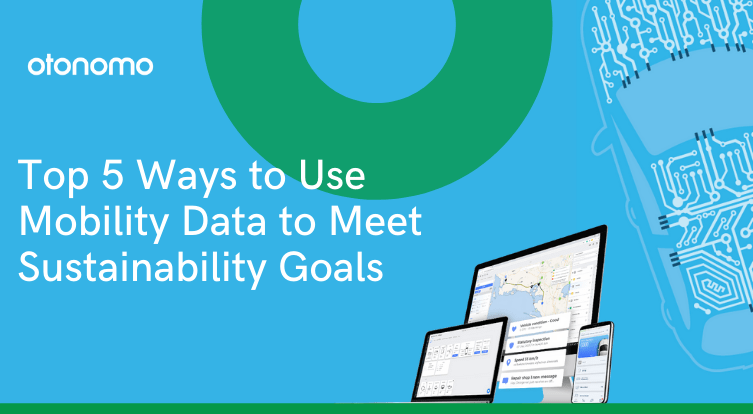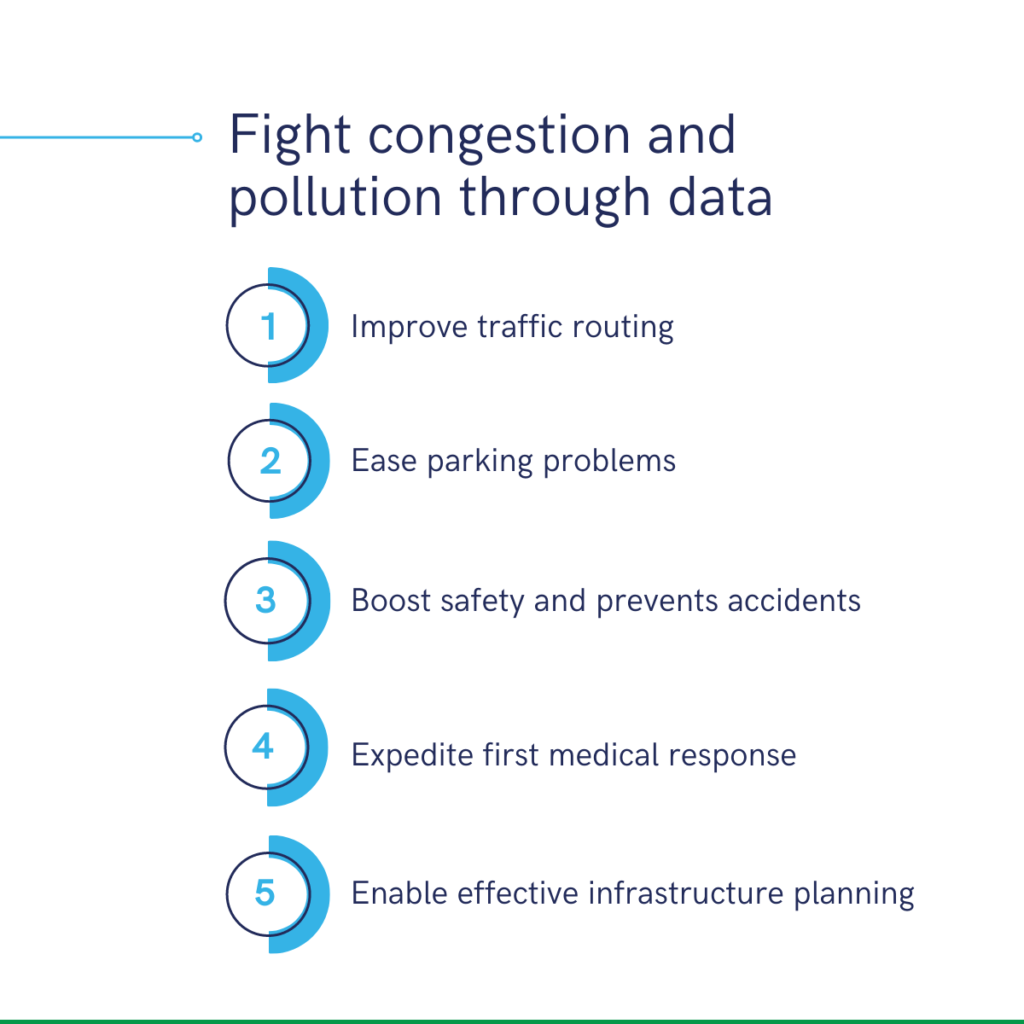
Sustainability is considered by many to be the number one challenge facing the transportation industry today. It plays a major role in the UN’s efforts to ensure SDGs (Sustainable Development Goals) and fight climate change. Transportation accounts for 64% of global oil consumption, 27% of all energy use, and 23% of the world’s energy-related carbon dioxide emissions. It is clear therefore that sustainable transportation can provide impactful benefits as we try and combat climate change. And if the future of the planet is not a good enough motivator, there are many positive and negative incentives (tax rebates or fines for example) offered by governments in order to reduce carbon emissions and make transportation more sustainable.
Vehicle electrification is hailed by all as the path to better transportation sustainability, alongside a move towards multi-modality. But there are other, less-obvious yet easy to implement, solutions that can still have a substantial impact.
Here are the top 5 ways you can use data to improve transportation sustainability across different aspects of mobility
5. Use data to deploy charging stations and drive private adoption of EVs
Adoption of electric vehicles seems like the most clear-cut route to cutting emissions, and indeed there are many incentive programs around the world – from tax rebates to outright subsidies – to help drive private vehicle owners towards purchasing electric vehicles. However, one thing is slowing this process down and that is the availability of public charging stations that can democratize EV adoption.
This is becoming more and more apparent as some of the drivers who want to adopt EVs are faced with a dilemma – “Where will I charge my car?”
If you own a parking space you can, for a price, electrify it and have a way to top up your battery, at least nightly. But for people living in urban areas and city centers, a privately owned parking space simply isn’t an option. If city dwellers are to adopt EVs, a public solution must be found.
Using data, charging can be made more readily available for everyone: a required step for any city interested in meeting their sustainability goals. However, charging stations are expensive to build and operate, and the decision on where to place them so that they are impactful must be based on data and mobility intelligence models, making sure the sites selected are commercially viable and answer drivers’ needs.
4. Use data to Optimize Fleet Management for Improved Efficiency
Optimizing fleet for sustainability is one of the best practices to help reach sustainable goals. Professionally run, fleets enjoy the level of control and expertise that allows for policy decisions to become real change. Fleet managers can look at multiple parameters. Physical variables like tire pressure, or engine efficiency can have substantial impact on reaching sustainable goals (a 10% pressure loss in the tires for example, can translate to about 3% increase in gas consumption).
These should be supplemented by an understanding of drivers’ behavior collected through vehicle data. Promoting beneficial habits, like turning off the vehicle while idling and discouraging practices like aggressive driving, can enact a change that is beneficial to both the environment and to the fleet itself.
3. Use data to ease the transition to multi-modal transportation
Moving away from privately owned vehicles, and replacing them with mobility services, is one of the keys to a sustainable transportation future. This often entails multi-modal transportation, where, for example, a journey may include mass public transportation, a personal micromobility device (such as an eBike or a shared scooter) and walking in one trip and can greatly benefit sustainability efforts.
For people to adopt multi-modality, it needs to provide a level of service that is comparable to alternatives such as using a car, and that can only be achieved by using data to plan and deploy services. Availability of micromobility vehicles where and when travelers need them must be at a level that will keep them confident that they won’t get stuck when using MaaS services.
Using data to constantly improve the level of service is a must have for this to bring about significant change.

2. Electrify fleets in your area using data
Fleet electrification seems like a no-brainer when it comes to promoting sustainability. After all, if private vehicles need to go electric, this is even more important when it comes to fleets, where every vehicle is utilized much more intensely. However, creating a sustainable electric fleet presents a new set of challenges for fleet operators. Challenges that require a new way of thinking that go beyond current best practices.
One of the main differences between EVs and ICEs when it comes to fleets is the downtime involved in charging the vehicles and the cost structure that goes along with it. Even with the fastest chargers, it can take 20 minutes or more to fully charge a battery, taking away from the uptime of the vehicle. And there is a trade-off between charging speed and cost that should be accounted for.
Fleet operators may have to make some investments in creating their own charging infrastructure in depots (even creating depots if they don’t currently have them) as well as come up with new business alliances with public charge point operators to minimize the costs of charging on the road, enter roaming agreements or find other operational solutions for fleet electrification to be successful.
Such adjustments can turn out to be very costly if fleet operators do not rely on data to plan out operations and to find the best partners.
1. Fight congestion and pollution through data
One of the primary reasons for pollution is congestion, especially in cities. As each vehicle spends more time on the road it burns more fuel and creates more pollution. Using multi-layered vehicle data can help alleviate many of the factors contributing to traffic congestion and improves driving experience by boosting the accuracy of travel time predictions. It can also yield more targeted and effective actions that:
- Improve traffic routing
- Ease parking problems
- Boost safety and prevents accidents
- Expedite first medical response
- Enable more effective infrastructure planning
Meeting sustainability goals is in everybody’s best interests but charging headlong into such a complicated problem without first accessing and understanding the data is foolish; especially as today connected vehicle data and mobility intelligence can make data driven decisions easy to implement and execute.
Want to learn more about sustainability? One of our industry experts would love to chat and see how you can use data to reach your sustainability goals. Schedule a meeting now












More Stories
Is Your 70 Series Land Cruiser Underperforming? Here’s How to Unleash Its True Potential
What to Do After a Motorcycle Accident to Protect Yourself
Injured in a Motorcycle Crash? Talk to an Attorney Now